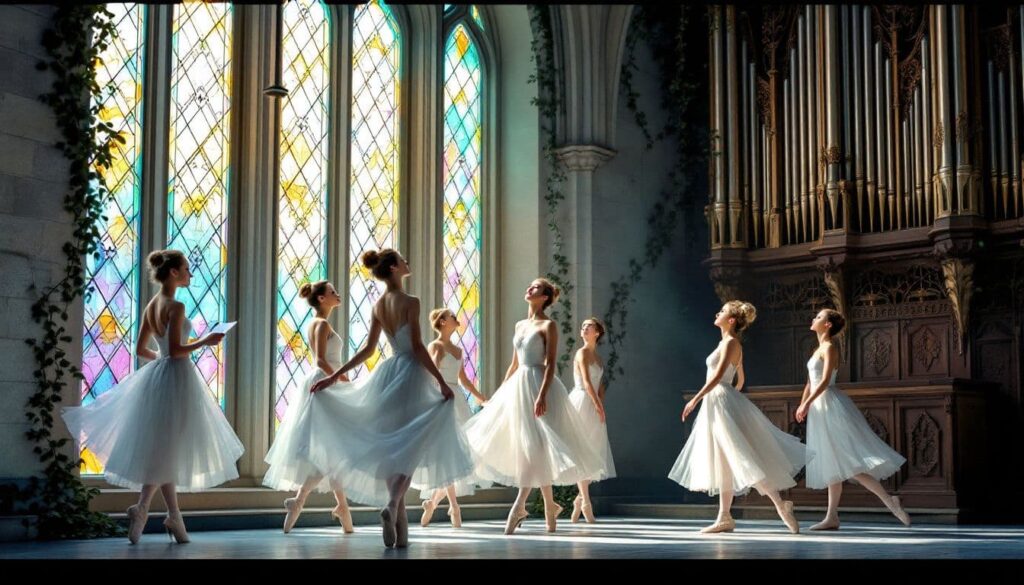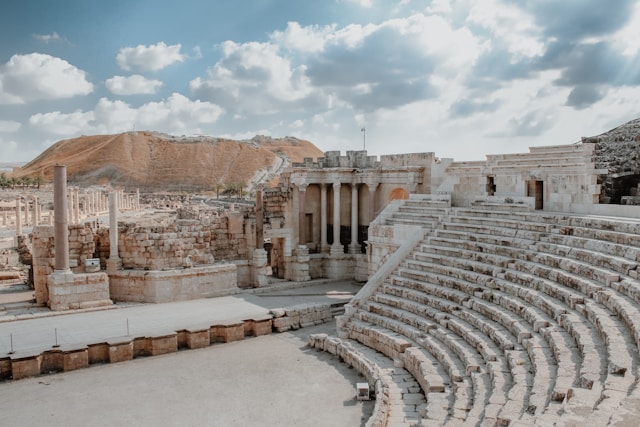Liturgical dance in church ministry allows worshippers to connect deeply with God through dance. This integration enriches worship services and enhances spiritual experiences. In this article, we explore how ballet can be part of church ministry, its benefits, and practical steps for implementation.
Before we discuss today’s topic, we would like to express our sincere appreciation to artdeballet.com. Their guidance and expertise were critical in shaping the structure and focus of this article, ensuring it delivers clear and accurate information.
Key Insights
- Ballet in church ministry enhances worship by facilitating deep spiritual reflection and strengthening congregational engagement through purposeful movement.
- Training programs like the Paradosi Christian ballet company combine advanced ballet skills with practical ministry experiences to prepare dancers for roles in worship arts.
- Story ballets serve as a dynamic tool for conveying biblical narratives, creating immersive worship experiences that deepen connections to scripture for congregants.
Ballet in Church Ministry: Elevating Worship Through Dance

Dance ministries aim to share the message of Christ and foster connections through movement, grace, and discipleship. Ballet, in particular, is a powerful method for spiritual expression, allowing worshippers to connect with God profoundly and intimately. The IPC Ballet program is one initiative that focuses on fostering excellence in worship through the art of dance.
Purposeful movement, such as ballet, can facilitate deep spiritual reflection and a tangible connection to God’s presence. Engaging in structured movements, such as classical ballet, can enhance one’s prayer life by grounding the practitioner in the physical world, making each movement a form of prayer. Ballet, as a form of sacred dance, can serve as a powerful means of connecting one’s physical movement to spiritual expression within the church setting.
Opportunities for worshippers to express their faith through movement with ballet create a dynamic worship environment that embodies the essence of worship. This artistic expression uplifts the spirit and encourages the congregation to incorporate their faith through creative movement.
Introduction
Ballet is increasingly being integrated into church ministry as a form of artistic expression. This innovative approach transforms worship services and positively influences individual faith and community cohesion. Ministries like Faith on Pointe are leading the way by merging ballet with Christian teachings to foster spiritual growth and community engagement. An artistic director plays a crucial role in shaping these ballet programs’ creative vision and educational approach, cultivating students’ character and creativity.
Integrating ballet in church services creates a more immersive worship experience, helping congregants connect with biblical teachings on a deeper level. Incorporating dance enhances the overall worship experience, making it more dynamic and engaging for all participants.
The Role of Ballet in Worship

Ballet is a powerful spiritual expression method, allowing worshippers to connect with God through movement. The IPC Ballet program, for instance, focuses on fostering excellence in worship through the art of dance. Company dancers within the program are committed to artistic integrity and moral accountability, adhering to the Ballet Magnificat Code of Conduct. This approach emphasizes the importance of embodying one’s faith through purposeful movement, facilitating deep spiritual reflection and a profound connection to God’s presence.
Structured movements like ballet, including liturgical movements, enhance prayer life, grounding the practitioner in the physical world and turning each movement into a form of prayer. This physical connection to spiritual practice can deepen the worship experience, allowing worshippers to express their devotion in a tangible and meaningful way.
Church ballet programs should prioritize safety measures and adult supervision during classes and performances to ensure a safe and nurturing environment for all participants. Fostering a spirit of joy and excellence in worship through dance creates a dynamic and spiritually enriching worship environment.
Ballet as a Form of Ministry
Dance ministry as a ministry approach provides a unique setting where art becomes a bridge to engage with the gospel message. This form of artistic expression creates inviting spaces for dialogue about faith, allowing people from varied backgrounds to engage in meaningful conversations about God. Creative expressions in ballet serve as a bridge, facilitating conversations between believers and nonbelievers and enabling deeper discussions about faith.
Ballet performances have the potential to evoke emotional responses that lead individuals to explore deeper truths about life and faith. For instance, audience members often report feeling uplifted and inspired by performances that address themes of hope, redemption, and personal value. These performances can reignite spiritual curiosity in individuals who have distanced themselves from the church due to negative experiences.
Attending ballet performances can rekindle spiritual longing, as illustrated by an audience member who, after witnessing a faith-based ballet, expressed a desire to reconnect with the church after six years of disillusionment. Opportunities like TalkBack sessions after performances allow for open dialogue between audience members and performers, facilitating discussions about the gospel. A key message from ballet ministry performances is that everyone is ‘Priceless,’ encouraging healing and self-acceptance.
Integrating ballet into worship transforms the act of prayer, making the physical body an essential component of spiritual practice. This approach emphasizes the connection between bodily movement and divine revelation, allowing worshippers to express their faith through movement.
Building a Ballet Ministry
Building a ballet ministry with a liturgical dance program requires a deep understanding of the intersection of faith and dance. A Christian ballet company can be a powerful tool for spreading the message of Jesus Christ and bringing people to salvation. Here are some key considerations for building a ballet ministry:
Training Ballet Dancers for Ministry

Christian dance training for ballet dancers preparing for ministry requires a blend of advanced ballet training and practical ministry experiences. Paradiso Christian Ballet Company operates a 2-year vocational Christian ballet trainee program aimed at developing dancers for ministry roles. This program integrates advanced ballet training with practical ministry experiences and outreach events, providing participants with a comprehensive understanding of how to use their art for worship.
Pre-ballet is a fun introductory class designed for children aged 3-5 who are potty trained, focusing on developing basic ballet skills, terminology, rhythm, and coordination through creative movement and music. Participants in the apprenticeship are also trained to teach ballet in a Christ-centered environment, ensuring that they can pass on their skills and faith to teach future generations of dancers. This holistic approach to training ensures that dancers are technically proficient, spiritually grounded, and ready to serve in ministry roles.
Pursuing excellence in ballet and ministry at Belhaven College equips trainees to make a meaningful impact in their communities. They use their gifts and art to share Jesus Christ’s message and foster connections through movement and discipleship.
Story Ballets in Church Settings

Story ballets, often called biblical dance narratives, are powerful tools for conveying biblical stories and themes through dance. Ballet Magnificat!, for example, focuses on narrative pieces that convey biblical stories through dance, such as Deliver Us and The Hiding Place. These performances explore biblical themes and aim to connect audiences more deeply with scripture through dance.
Story ballets are distinct from traditional performances as they incorporate narration and depict specific biblical events, making the narratives clear and present to the audience. The ballet ‘Savior’ was pivotal for Ballet Magnificat! as it was their first story ballet performed in collaboration with a church, marking a shift towards more narrative-driven works.
Incorporating story ballets into church services creates a more immersive worship experience that connects congregants with biblical teachings on a deeper level.
Involving the Congregation
Dance in worship services enhances spiritual expression and creates a deeper connection to Biblical teachings. Dance integration in worship, including congregational dance, also enhances spiritual expression and deepens congregational engagement. Using familiar songs for worship encourages congregation participation by reducing the need for them to learn new lyrics.
Movements taught to the congregation should be simple and repetitive to facilitate easy participation, especially for students and those unfamiliar with dance. Demonstrating the dance movements oneself can simplify the learning process for the congregation and allow them to focus on receiving ministry through the dance.
Ballet Magnificat! Integrates audience engagement by summarizing the performance’s message, encouraging reflection on biblical teachings.
Outreach and Evangelism through Ballet
Ballet Magnificat’s outreach and evangelism efforts are crucial to its mission to share the Gospel of Jesus Christ through dance. The company’s dancers and staff are committed to using their talents to spread God’s love and redemption to people of all ages, beliefs, and backgrounds.
One way Ballet Magnificat reaches out to its community is through performances at various venues, including churches,, nursing homes, schools, and other public spaces. The company’s dancers also participate in outreach events, such as Sunday school programs and youth rallies, where they share their testimonies and perform ballet pieces that convey the message of Jesus Christ.
In addition to its local outreach efforts, Ballet Magnificat participates in international mission trips, where its dancers and staff share the Gospel with people in other countries. These trips allow the company to reach a wider audience and demonstrate the power and beauty of dance as an evangelism tool.
Ballet Magnificat’s outreach and evangelism efforts are made possible through the support of its donors and volunteers. The company relies on the generosity of individuals and organizations to fund its outreach programs and festivals and to provide resources for its dancers and staff.
Testimonies from Ballet Ministries
Dance testimonies can facilitate deep spiritual reflection and a connection to God’s presence, truth, and the Holy Spirit. Ballet performances may inspire nonbelievers to try church again and reignite spiritual longing. Sharing personal testimonies about how dance has influenced one’s life can effectively engage the congregation and open their hearts to participating.
Explaining the meaning behind each movement in class enhances understanding and appreciation, encouraging more people to participate. Structured movement, like ballet, enhances prayer life by grounding the practitioner in the physical world.
Collaboration with Other Ministries
Pooling different perspectives from various ministries can lead to innovative approaches in ministry activities. Dance in worship services enhances spiritual expression and creates a deeper connection to Biblical teachings.
A cohesive worship experience combines elements from different ministries, enhancing the service’s overall impact. Dance integration in worship enhances spiritual expression and deepens congregational engagement.
Practical Considerations for Church Ballet Programs

Sufficient space is essential for accommodating church dance programs, allowing for safe movement and practice. Before the semester begins, children aged 3-5 must be potty trained to participate in pre-ballet classes. Activities should be scheduled with ample notice to avoid conflicts and ensure maximum participation. Securing funding for ballet programs often involves budgeting within existing church resources or organizing fundraising events.
Cooperating with other ministries allows for the sharing of resources, making it easier to organize larger events. Working together also increases volunteer capacity, enabling more effective project execution.
Summary
Integrating ballet into a liturgical dance ministry enhances worship experiences and fosters spiritual growth and community cohesion. By embracing this artistic expression, churches can create a dynamic, engaging worship environment that speaks to the heart and soul.
Ballet can be a powerful tool for spiritual expression and ministry. Structured movement, narrative performances, and congregational participation can elevate ministry and deeply connect congregations. We encourage churches to consider incorporating ballet into their worship services.
We hope you found this exploration enlightening. We want to thank Art de ballet again for their ongoing commitment to sharing ballet knowledge, which has been a driving force behind our material. We’re truly grateful for their partnership.
